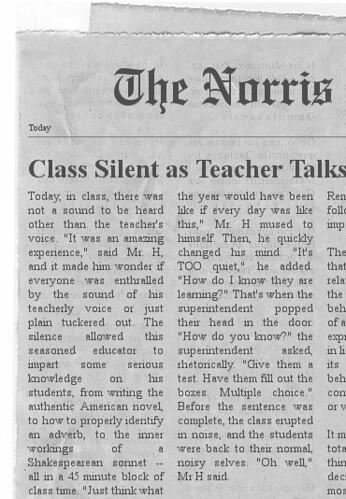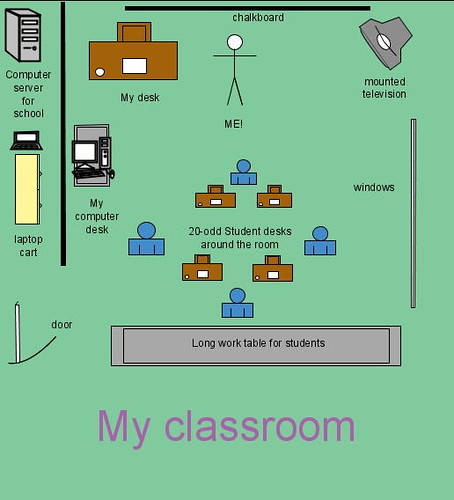This morning, I was up particularly early because one of my sons was sick and somehow, this “found poem” that is inspired by Michael Wesch’s video on New Literacy began to formulate in my mind, and I became obsessed with composing and publishing it. I used Tonya W.’s translation of the video into text as my source (thanks!)
So, here goes:
Finding Words Inside of Image: An Undiscovered Country (February 2007)
(with credit to Michael Wesch for creating the video Web 2.0 … the Machine is Us/ing US and to Tonya Witherspoon for converting Michael’s video into text. With apologies to both.)
Listen to the audio version of the poem
To hunt the invisible poem inside the video
is akin to exploration.
You unlock the door — pull back the skin —
and decode its unfolding creation.
In this undiscovered country — a hidden interior —
beneath the code of image and sound —
a webworld of nodes exist
beyond sight and sense, but not experience;
Its poetry is waiting to be found.
Click
<title><title>Rethink<title><title>
Digital text is anywhere, everywhere, virtually structural, expanded, different;
Social form defining formatting constraints
as the content is designed and expanded and productive;
linking no longer teaching the machine,
no longer linking information,
we teach you an idea a billion times a day as a virtual sticky document;
post your note in private, but highlight the network,
paper the web.
Exchange the form.
I am linear/non-linear information.
Click.
<title><title>Rethink<title><title>
Created in the Limelight, fluffy and white, social, tracing authorship,
organize the people, the text, the family, ourselves –
media mashes U and I into RSS as a broadcast blog born every second
that can relink/respond to this automated HTML-XML-Web 2.0 world.
Highlight the collaboration; free the idea;
forge a link; teach me in digital response: love;
teach the machine when we post, tag, name, link, export, map, save, organize.
Click
<title><title>Rethink<title><title>
Do not define form as content in code;
define it as flexible humans designed to forge and expand together.
Rethink the world as an idea of the Wayback Machine;
Ethics/Aesthetics/Rhetorics: names teaching us of ourselves.
Click
<title><title>Rethink<title><title>
The beauty of being digital is not just text
but video
photo flickr data design
hypermedia anthropology created by you,
me.
Us.
View the source as bold and italicized,
inseparable
and free of complicated code that is no longer just commerce;
etext me; I etext you; We etext the we in us because the information is:
tracing
collaborating
flexible structural elements
sharing as moveable savage minds that can be exported,
highlighted, organized.
Above all,
search!… create! … teach!
Click
<title><title>Rethink the World <endtitle>
Click.
Peace (beneath the surface of text).
Kevin



